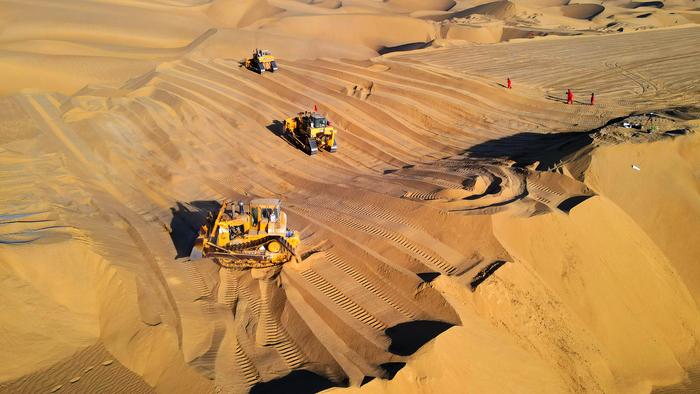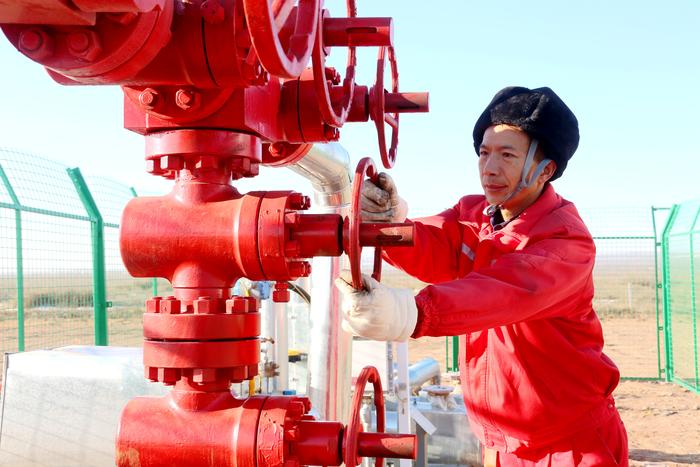|
| 2020-12-29 来源: 中国石化新闻网 |
| 石化新闻 |
中国石化新闻网讯 据今日油价12月27日报道,三个月前,英国石油巨头BP公司宣布,石油需求峰值已经过去,这个信息使石油和天然气行业受到了冲击。在该公司2020年的能源展望中,首席执行官伯纳德·鲁尼承诺,到2030年,英国石油公司将把可再生能源支出增加20倍,达到每年50亿美元,并且不会进军任何新的国家去勘探石油和天然气。考虑到英国石油一直在油气领域进行积极的探索,这一声明就有点令人震惊了。 投资界似乎与英国石油(BP)的看法一致,过去10年,石油和天然气行业一直是表现最差的行业。今年8月,石油巨头埃克森美孚被赶出道琼斯工业平均指数,雪佛龙成为了该指数中油气行业唯一的代表,该行业再次遭受打击。 与此同时,油价似乎停滞在每桶45美元左右的水平,几乎没有可能会攀升到大多数页岩油生产商需要盈利的每桶55美元左右的水平。 对全球石油和天然气前景的深入研究表明,随着季度的推移,可能开始占据新闻头条的是石油供应峰值到来的讯号,而不是石油需求峰值。 石油需求峰值已经过去 当许多分析师谈到石油峰值时,他们通常指的是全球石油需求将进入不可逆转的下降阶段。 根据英国石油公司的说法,这个点已经来过了,预计石油需求在当前十年将至少下降10%,在未来两年内将下降50%。英国石油指出,从历史上看,能源需求一直与全球经济增长同步稳步增长,几乎没有中断;然而,新冠肺炎疫情危机和气候行动的不断推动可能会永久性地改变这种局面。 BP对未来的全球燃料和电力需求的三种可能情景进行了建模:一是照常运营,二是快速转型,三是净零排放需求。该公司表示,即使是在最乐观的情况下,即能源政策以目前的速度照常运营发展,石油需求仍会下降,只是与其他两种情况相比速度会慢些。 不过,石油看涨人士可以感到欣慰的是,在一切照旧的情况下,英国石油预计,到2030年,石油需求将保持在2018年的9700万至9800万桶/天的水平,2040年后将降至9400万桶/天,30年后将降至8900万桶/天,到2050年,每年的需求损失将不到1%。 然而,在另外两种情况下,情况可能会大不相同,这两种情况需要政府采取积极的政策,以期在2050年前达到净零排放状态,以及碳价格和其他旨在限制全球变暖的干预措施来限制全球变暖。 在快速转型的情况下(比较激进),BP预计到2030年石油需求将下降10%,净零排放需求下将下降15%(最激进)。 换句话说,在未来10年,除了一切按照当前水平运营的情况外,石油需求的下降对石油行业来说注定是灾难性的。幸运的是,石油行业可以在未来10年内稳定发展。 德克萨斯州独立能源分析师兼顾问大卫·布莱克蒙告诉《福布斯》,许多分析人士对英国石油公司严峻的预测前景表示怀疑。事实上,鉴于全球经济可能需要时间从新冠肺炎疫情中复苏过来,以及达到另外两种发展局面所需数万亿美元的资金,这样看来,“一切照常”似乎是目前最有可能的发展局面。 此外,值得注意的是,英国石油公司在新冠肺炎疫苗进入竞争形势之前就做出了这些预测。随着几种可行的候选疫苗的出现,全球经济很有可能以比预期更快的速度复苏,从而帮助石油需求更快地复苏。 石油供应峰值或很快到来 尽管很少有人认真讨论石油供应方面情况,但在未来几年内,石油供应有可能明显达到峰值状态。 过去,石油供应方面的“峰值”理论大多被证明是错误的,主要是因为它的支持者总是低估了尚未发现的资源的规模。近年来,“石油需求峰值”理论一直高估了可再生能源和电动汽车取代化石燃料的能力。 当然,当时几乎没有人能预见到美国页岩油的爆炸式增长,在短短10年的时间里,美国页岩油供应量从每天100至200万桶增加到每天1300万桶。具有讽刺意味的是,页岩行业危机可能是引发石油供应峰值的罪魁祸首。 IHS Markit副董事长Dan Yergin在一篇论文中指出,由于投资的大幅削减,页岩油气产量几乎不可避免地会出现逆转和下降,之后才会缓慢复苏。页岩油井数量的下降速度非常快,因此需要不断钻井来补充损失的供应。尽管由于油价从每桶30美元左右反弹至每桶40美元左右,美国钻井平台数量似乎趋于稳定,但最新320台的钻井平台数量仍远低于一年前的802台。 尽管欧佩克+国家目前拥有约800万桶/天的闲置产能,但目前的价格水平根本无法支持大量的开采活动,而额外的石油供应可能只够填补美国页岩油的缺口。 王佳晶 摘译自 今日油价 原文如下: The Very Real Possibility Of Peak Oil Supply Three months ago, British oil giant BP Plc. (NYSE:BP) sent shockwaves through the oil and gas sector after it declared that Peak Oil demand was already behind us. In the company’s 2020 Energy Outlook, chief executive Bernard Looney pledged that BP would increase its renewables spending twentyfold to $5 billion a year by 2030 and ‘‘... not enter any new countries for oil and gas exploration.’’ That announcement came as a bit of a shocker given how aggressive BP has been in exploring new oil and gas frontiers. The investing universe appears to concur with BP’s sentiments, with the oil and gas sector consistently emerging as the worst performer over the past decade. The sector suffered yet another blow after the largest investor-owned oil company in the world, ExxonMobil (NYSE:XOM), was kicked out of the Dow Jones Industrial Average in August, leaving Chevron (NYSE:CVX) as the sector’s sole representative in the index. Meanwhile, oil prices appear stuck in the mid-40s with little prospects of climbing to the mid-50s that most shale producers need to drill profitably. Delving deeper into the global oil and gas outlook suggests that it’s peak oil supply, not peak oil demand, that’s likely to start dominating headlines as the quarters roll on. Peak Oil Demand When many analysts talk about Peak Oil, they are usually referring to that point in time when global oil demand will enter a phase of terminal and irreversible decline. According to BP, this point has already come and gone, with oil demand slated to fall by at least 10% in the current decade and by as much as 50% over the next two. BP notes that historically, energy demand has risen steadily in tandem with global economic growth with few interruptions; however, the COVID-19 crisis and increased climate action might have permanently altered that playbook. BP has modeled 3 possible scenarios for the future of global fuel and electricity demand: Business as Usual, Rapid Transition, and Net-Zero. Here’s the kicker: BP says that even under the most optimistic scenario where energy policy keeps evolving at pretty much the pace it is today (Business as Usual) oil demand will still suffer declines—only at a later date and a slower pace compared to the other two scenarios. The oil bulls, however, can take comfort in the fact that under the Business-as-Usual scenario, BP sees oil demand remaining at 2018 levels of 97-98 million barrels per day till 2030 before falling to 94 million barrels per day in 2040 and eventually to 89 million barrels per day three decades from now. That’s a loss in demand of less than 1% per year through 2050. However, things could look very different under the other two scenarios that entail aggressive government policies aimed at reaching net-zero status by 2050 as well as carbon prices and other interventions aimed at limiting global warming. Under the Rapid Transition scenario (moderately aggressive), BP sees oil demand falling 10% by 2030 and nearly 15% under Net Zero (most aggressive). In other words, the decline in oil demand is bound to be catastrophic for the industry over the next decade under any other scenario other than Business-as-Usual. Luckily, this is the scenario that’s likely to dominate over the next decade. David Blackmon, a Texas-based independent energy analyst/consultant, has told Forbes that many analysts are skeptical about BP’s grim outlook. Indeed, Blackmon says a “Business as Usual” scenario appears the most likely path for the time being, given the time the global economy might take to recover from Covid-19 as well as the trillions of dollars that would be required to implement the other two cases. Further, it’s important to note that BP made those projections before Covid-19 vaccines had entered the fray. With several viable vaccine candidates now on the scene, there’s a good chance that the global economy might recover at a faster-than-expected clip and thus help oil demand to recover more rapidly than earlier estimates. Peak Oil Supply Though rarely discussed seriously, Peak Oil Supply remains a distinct possibility over the next couple of years. In the past, supply-side “peak oil” theory mostly turned out to be wrong mainly because its proponents invariably underestimated the enormity of yet-to-be-discovered resources. In more recent years, demand-side “peak oil” theory has always managed to overestimate the ability of renewable energy sources and electric vehicles to displace fossil fuels. Then, of course, few could have foretold the explosive growth of U.S. shale that added 13 million barrels per day to global supply from 1-2 million b/d in the space of just a decade. It’s ironic that the shale crisis is likely to be responsible for triggering Peak Oil Supply. In an excellent op/ed, vice chairman of IHS Markit Dan Yergin observes that it’s almost inevitable that shale output will go in reverse and decline thanks to drastic cutbacks in investment and only later recover at a slow pace. Shale oil wells decline at an exceptionally fast clip and therefore require constant drilling to replenish the lost supply. Although the U.S. rig count appears to be stabilizing thanks to oil prices rebounding from low-30s to mid-40s, the latest tally of 320 remains far below the year-ago figure of 802. Although OPEC+ nations currently have about 8 million barrels of oil per day of spare capacity, the current price levels do not support much drilling at all, and the extra oil might only be enough to cover the shortfall by U.S. shale. |








